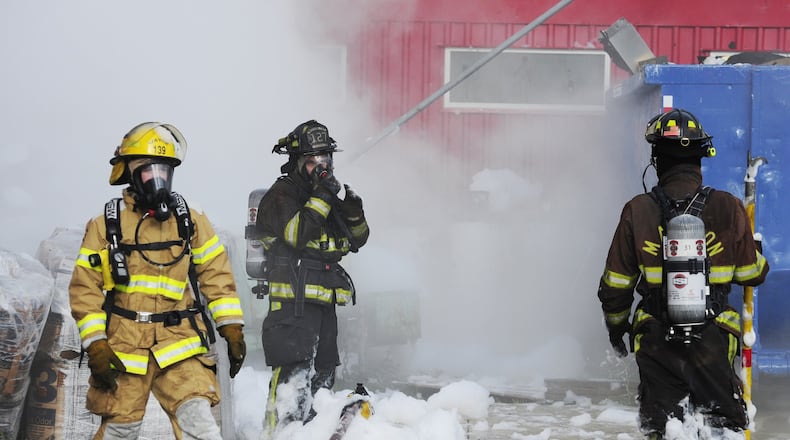PFAS are the compounds that the Dayton Fire Department formerly used during training at the city’s fire training center, 200 McFadden Ave. The foams have also been used at Wright-Patterson Air Force Base.
The city no longer uses PFAS-based foam during training exercises, a city spokeswoman said Wednesday.
The foam is believed to have caused the contamination of the aquifer beneath the fire training center.
The aquifer provides the city’s drinking water, and that of many other cities in Montgomery County.
MORE: This chemical is in our water. Here are 15 things you should know if you drink Dayton water.
Test results for levels of the chemicals in Dayton's treated drinking water are below an advisory guideline set by the U.S. Environmental Protection Agency for human consumption. However, the Dayton Daily News has previously reported other states have set more stringent levels below what's present in Dayton's water.
Baldridge’s bill would effectively put Dayton’s current practice of training without active foam into law, but would require departments that still train with PFAS-based foam to find an alternative or train without the foam.
A former fire chief in Wayne Twp., Adams County, Baldridge said he is focused on “protecting the folks who put their lives on the line every day.”
“It’s something that we can do that’s proactive,” Baldridge said.
Baldridge said that the foam, formally called Class B foam with PFAS, or perfluoroalkyl and polyfluoroalkyl substances, could still be used in fighting fires but would need to be phased out of training by Jan. 1, 2020.
That’s good news for the bank accounts of some departments that already have the PFAS-based foam on their shelves. But Baldridge said it’s a warning that it’s time to move away from the PFAS-based foam to alternatives.
“Our goal is not to take away any tools that are used in a catastrophic event,” Baldridge said, noting that completely replacing the material right now could cause a hardship for departments.
PFAS are known for being exemplary fire retardants and extinguishers, particularly on petroleum-based fires that can’t be extinguished by water alone but can be smothered by the foam.
“Normally, we have to put the wet stuff on the red stuff, but when you’re dealing with fuel-based fires, you need to have that smothering effect,” Baldridge said. “There is technology today and there are Class B foams that are in place that departments can use in the emergency setting and in the training setting.”
Several PFAS manufacturers, including 3M Company and E.I. DuPont de Nemours, are named in a lawsuit in the U.S. District Court for the Southern District of Ohio. The case was filed by the Glendale fire chief, who says he was exposed to PFAS while using foam.
The chief, Kevin Hardwick, has brought the case on behalf of “all individuals residing in the United States who … have detectable levels of PFAS materials in their blood serum.”
Most people in the U.S. and other industrialized countries have measurable amounts of PFAS in their blood, according to the U.S. Centers for Disease Control and Prevention, and at much lower levels in urine, breast milk and umbilical cord blood.
Oral arguments in the case were held late last month. The plaintiffs have generally denied allegations they knew about but didn’t disclose the potential health concerns surrounding PFAS and have vowed to defend their environmental stewardship reputations.
Dayton is also suing PFAS manufacturers, alleging exposure can lead to kidney and testicular cancer, thyroid disease, high cholesterol, ulcerative colitis, liver damage, and pregnancy-induced hypertension.
Read more Dayton Daily News water coverage:
» City: ‘We do not need’ more generators for water system, would cost $45M
» Dayton blames county contractor for February water outage
» Understanding Dayton’s drinking water issues
» Progress slow in addressing chemicals in local water systems
About the Author
